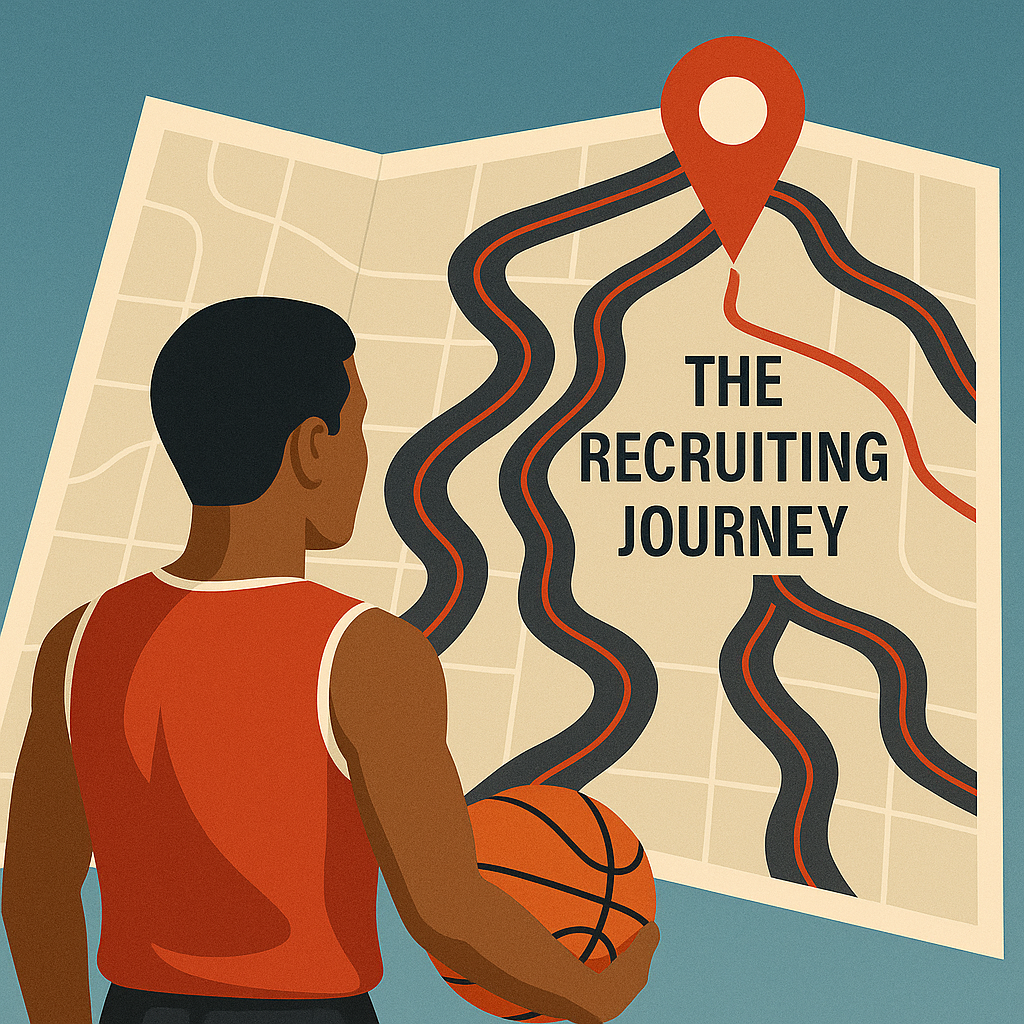Providing Athletes with a Road Map in the Recruiting Process
The college recruiting process often feels like stepping into uncharted territory. There are no clear mile markers, no guarantees, and plenty of detours. For athletes, this uncertainty can heighten stress, pressure, and doubt. That’s why having a road map, a flexible framework to navigate the journey, can make all the difference.
Think of recruiting like a GPS. You plug in the destination (playing college athletics), but the route may change. There may be traffic, unexpected turns, or rerouting altogether. And, you can still find your way to the place meant for you. A road map doesn’t eliminate obstacles, it helps athletes stay grounded, make intentional choices, and trust their unique process.
By Annie Morris, M.S., LGPC, NCC – Clinical Mental Health Counselor
Step 1: Define Success
Too often, success is narrowly defined by division levels, scholarship amounts, or prestige of a program. These markers are external and can shift quickly. When athletes focus on external markers, they often lose sight of their own values and needs, leaving their confidence and identity tied to factors outside of their control. A more grounded starting point can ask:
What do I want out of my college experience—athletically, academically, and personally?
What kind of environment will support my growth as both a person and an athlete?
How do I want to feel day-to-day on my team and campus?
When athletes define their own version of success, they move from chasing validation to making intentional, values-based decisions.
Step 2: Distinguish Wants from Needs
Athletes often blur the line between what they want and what they need. A want might be a specific division, school prestige, or potential for NIL deals. A need might be access to athlete support services, financial aid, specific academic programs, or proximity to home.
Encourage athletes to create two lists:
Wants: Aspirational but not essential
Needs: Non-negotiables that support well-being and long-term success
This clarity prevents decision-making driven by pressure or comparison and helps athletes recognize what environments will truly help them thrive.
Step 3: Embrace the Detours
No two recruiting journeys look the same. Some athletes commit early, others wait longer, and some take alternate routes such as post-grad years or transferring. None of these paths are “less than.” They are simply different routes toward similar goals.
Normalize these variations and remind athletes:
A later commitment isn’t a failure, it’s timing.
Pivoting schools or divisions isn’t a setback, it’s alignment.
Exploring different routes doesn’t close doors, it broadens opportunities.
Detours are not failures. They’re part of the process.
Step 4: Focus on What You Can Control
Recruiting is unpredictable. What’s controllable? Effort, attitude, resilience, rest, recovery, and communication. Helping athletes anchor to those controllables fosters confidence and stability, especially when outcomes feel uncertain.
Focus on Role. Encourage athletes to stay grounded in their job on the team. How they show up in practice, games, and workouts, rather than worrying about what coaches, refs, or opponents might do.
Pre-Performance Routines. Support athletes in creating repeatable warm-ups, breathing practices, or visualization rituals that center them before competition or in moments of overwhelm. These routines create a sense of stability in the face of uncertainty.
Reframe Performance. Instead of thinking, “I need to win,” shift the focus to, “I can control my preparation, my effort, and my attitude.” This reframing reduces pressure and builds resilience by emphasizing controllables over outcomes.
Step 5: Stay Connected to Identity Beyond Sport
The pressure of recruiting can make athletes believe their worth is tied to performance or offers. A road map should always include reminders that they are whole people first. Encourage athletes to:
Nurture friendships and interests outside of sport
Prioritize academics and future career goals
Lean on supportive relationships for grounding
Focus on hobbies and interests outside of sport that provide fulfillment and enjoyment
When athletes see themselves as more than their sport, they approach recruiting from a place of strength rather than scarcity.
Final Takeaway: Every Path is Unique
There is no single “right way” to be recruited. The most meaningful journeys are those that reflect an athlete’s values, support their whole-person growth, and allow space for joy in sport.
As parents, coaches, and mentors, offering athletes this road map—built on flexibility, self-awareness, authenticity, and balance—helps them not only reach their destination but also enjoy the ride along the way.
Reflection Questions:
How am I (as an athlete, parent, or coach) defining success in this process, and does that definition align with long-term values and growth?
What needs are non-negotiable for this athlete to thrive, and how can we keep those front and center when pressures or comparisons arise?
When setbacks or detours happen, how can we reframe them as opportunities for resilience and realignment, rather than failures?
Resources:
“Want to Play College Sports? — NCAA.org”
This page offers a comprehensive guide for student-athletes (and their families) on eligibility, academic requirements, and steps for navigating the collegiate athletics pathway.
“How to Get Recruited — NCSA Sports”
NCSA’s recruiting guide breaks down the recruiting process into phases (timing, exposure, contact, evaluation) and offers actionable tips for getting on a coach’s radar, understanding division levels, and managing communication. It aligns with your message about controllables, preparation, and staying proactive.

